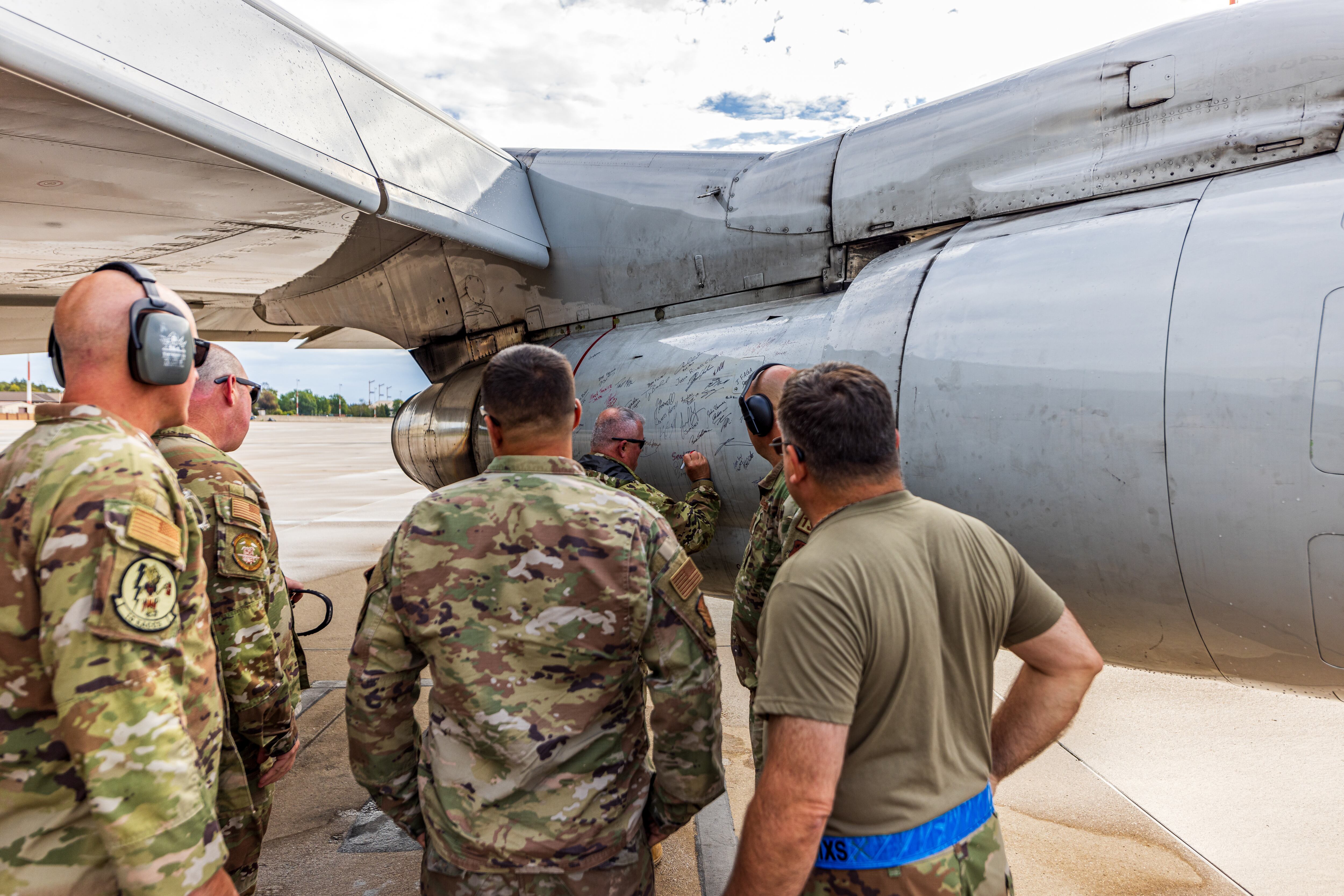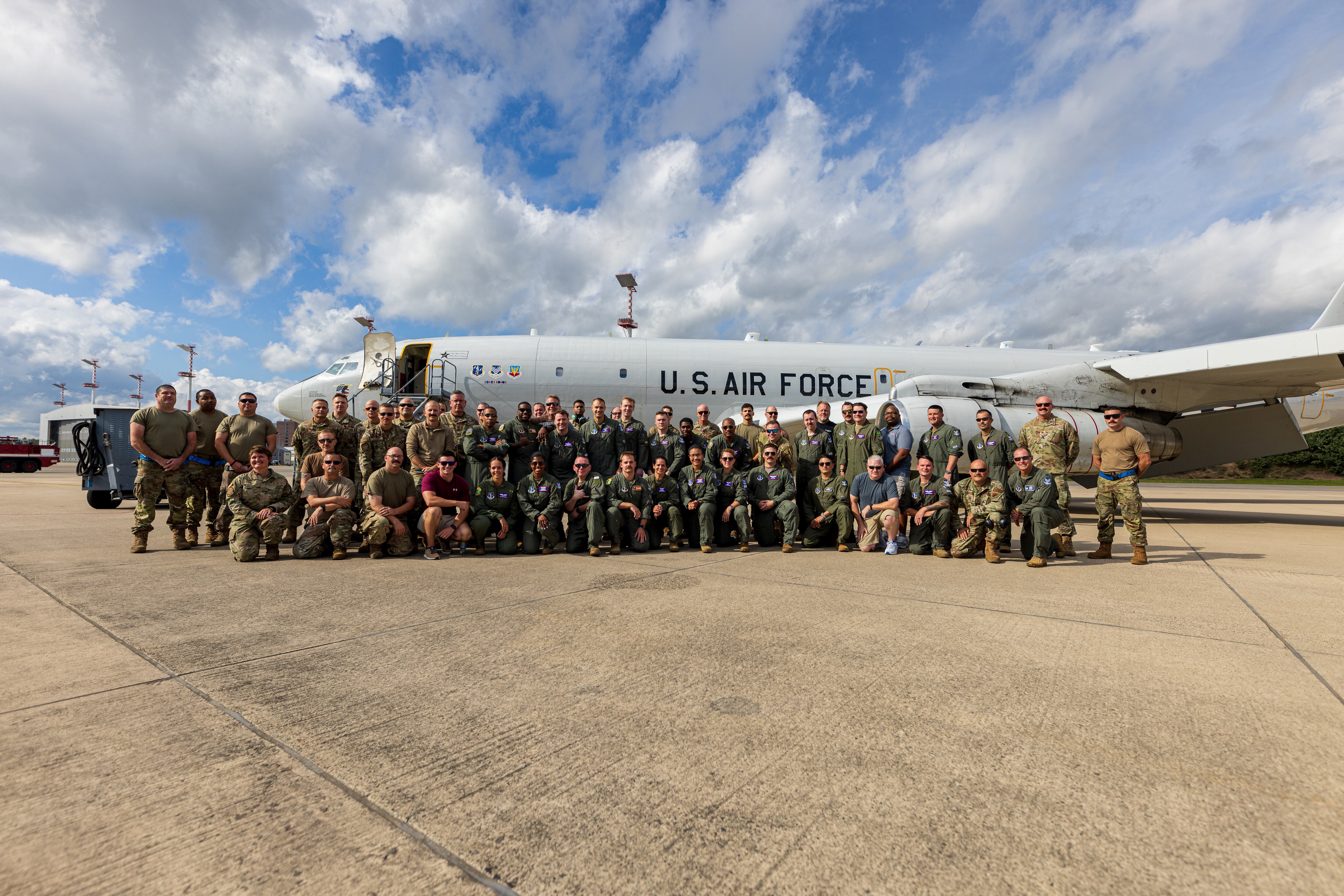The stalwart E-8C Joint Surveillance Target Attack Radar System plane flew its last operational mission Sept. 21, capping a three-decade career as a military “eye in the sky” in conflicts from Operation Desert Storm to the war in Ukraine.
The sortie is a stepping stone on the airframe’s journey into retirement, as the Air Force reshapes its inventory for the demands of modern combat.
“It’s bittersweet,” 116th Air Control Wing boss Col. Christopher Dunlap said in a release Monday. “I’ve been flying this mission on this aircraft since the spring of 2003. There’s been a lot of changes over the years.”

JSTARS is a modified Boeing 707 that uses a long sensor on the belly of the jet to track the movement of ground forces around a region and share that information with other aircraft and troops below. Combat units rely on the fleet to highlight potential targets and stop friendly forces from veering into harm’s way.
Its final mission departed from Ramstein Air Base in Germany, a hub for U.S. military operations across Europe and points farther south. The Air Force declined to answer where the sortie took place or what it entailed.
“The aircraft’s sensors provided invaluable intelligence, guiding strategic decisions on the ground and enhancing operational effectiveness,” the service said in the release.
The fleet’s exit from military operations signals the end of an era in battlefield intelligence.
E-8Cs have flown in military operations from Desert Storm in 1991 to Iraq and Afghanistan a decade later, to the surveillance of Russian troops amassed at Ukraine’s border. They have also assisted in noncombat missions like transnational drug busts.
The fleet withdrew from U.S. Central Command in 2019 after an 18-year deployment supporting counterterror operations.
“The E-8C JSTARS has played a vital role in countless operations, supporting troops and safeguarding nations,” the Air Force said on Facebook.
The fleet, which included 16 operational jets when retirement began, has been managed by two Air Force units: the active duty 461st Air Control Wing and the Georgia Air National Guard’s 116th ACW, both at Robins Air Force Base.
Together, they have flown more than 14,000 sorties since 2002, when they merged as the service’s first “blended” wing, the service said. The 461st ACW logged its last operational sortie in June.

Plans to sunset the JSTARS fleet have gradually come to fruition over the past several years.
The Air Force briefly launched an effort to solicit another aircraft to replace JSTARS but abandoned that program in fiscal 2019. After sparring with Congress over the fate of the fleet, the service began retiring E-8Cs in February 2022.
Instead of maintaining a vast inventory of jets that are purpose-built for highly specialized missions, the Air Force now wants to use a network of satellites, aircraft sensors and ground radars to collect the same targeting and tracking data.
The service hopes that approach will make it more resilient against potential attacks on its command-and-control enterprise, save money on aircraft maintenance and use its airmen more effectively.
Two of the original 16 aircraft remain at Robins, according to the Air Force release. The last JSTARS is slated to depart for the Air Force’s graveyard of retired aircraft at Davis-Monthan AFB, Arizona, during the first week of November.
Airmen may still use the jet for flight proficiency training until it is formally retired, Air Force spokesperson Capt. Dustin Cole said.
As its centerpiece fleet dwindles, Robins has started taking on new missions that the Air Force views as more relevant in future wars.
Nine E-11A airborne communications relay planes will be based at the central Georgia installation, as well as a command-and-control squadron, a group focused on electromagnetic spectrum warfare, and an office to handle the Air Force’s acquisition of future communications technologies known as the Advanced Battle Management System.
Some airmen are already working to open those units, while others are in training to staff them.
“You can’t expect a wing who has a long history of excellence to sit around and do nothing when there is plenty of work left to do,” Dunlap said in an emailed statement. “It is not in our DNA.”
Rachel Cohen is the editor of Air Force Times. She joined the publication as its senior reporter in March 2021. Her work has appeared in the Washington Post, the Frederick News-Post (Md.), Air and Space Forces Magazine, Inside Defense, Inside Health Policy and elsewhere.








